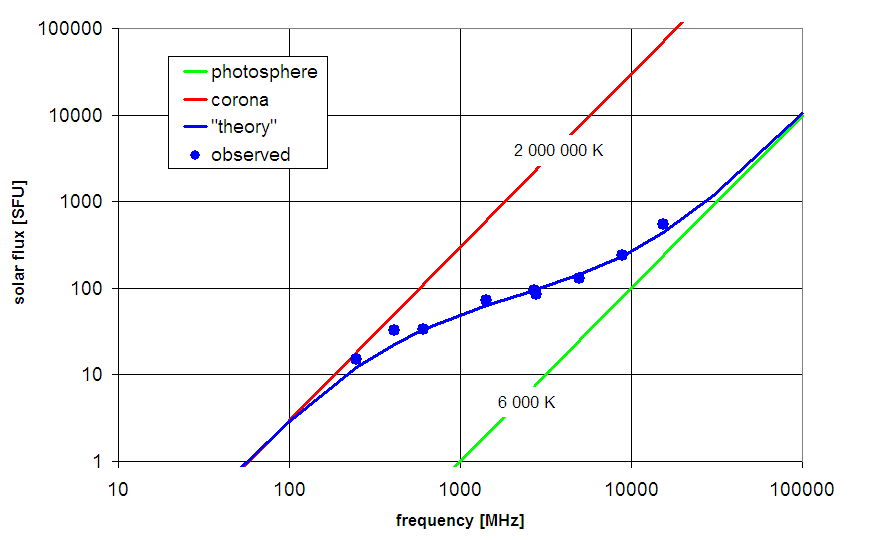Solar Flux, HPBW and System Temperature of ESA-Haystack (1.4 GHz)
Joachim Köppen, Strasbourg, 2011/12
Observations
Follow the procedures to
switch-on the ESA-Haystack telescope
- Click Record to start recording the data
- Use any centre frequency, and a frequency span of 0.5 MHz
- Goto ISU for flux calibration and observe for 2 min.
- Goto the Sun, and observe for 2 min
- Offset the antenna from the Sun, by entering an offset angle
into the field labelled PointCorr. Use either AZ or EL.
Do this for offsets of e.g. -20, -16, …, 0, 4, 8, 12, and 20°,
observe each position for 2 min
- Observe also the empty sky at the same elevation of the sun,
but at azimuth at least 30° to the east
Interpretation (more details here
and there):
- Import the text file with the data into Excel
- For each offset position do this
- take the average spectrum of all the spectra recorded here,
and plot it in a Scatter Plot
- sum the powers over the spectrum – but do not use the first
9 and the last 9 frequency points
- do the same for the empty sky, and determine its total
power: Pcal.
- The plot of the difference of these total powers and the
total power taken at the empty sky, as a function of offset
angle gives the shape of the main beam.
- Fit a Gaussian curve to the data, and determine the width
(note that HPBW = 2*sqrt(2*ln2) * σ)
- For the system temperature
- Determine the total power for the calibrator: Pcal
- Compute Tsys = 290 K / (Pcal / Psky – 1)
- Now that we have calibrated the instrument, we can also compute
the flux of the sun
- Compute the antenna temperature of the sun from
Tant_sun = 290 K * (Pmax – Psky) / (Pcal – Psky)
- The antenna beam’s solid angle is Ω = π/4 * (HPBW*π/180°)²
- This gives its effective area: Aeff = λ²/Ω
- The flux F = 2 k Tant_sun/Aeff can be compared with the data for
that day and frequency published by
NOAA
(note that 1 SolarFluxUnit = 10000 Jy)
- But it is very likely that our flux may differ from the NOAA flux. The
reason is that our value for the effective area is not correct! We can use
the flux measurements to compute the effective area of our telescope ...
and then also compute its efficiency = Aeff/Ageometry. Values between 0.5
and 0.9 would be realistic.
We may also derive the temperature on the solar surface:
- From here
one gets the angular diameter of the sun: D.
- The filling factor with which the sun fills the antenna beam is
given by: (D/HPBW)²
which allows the compute the surface temperature from the
maximum antenna temperature
Tsun = Tant_sun * (D/HPBW)²

| back to Main page
| ESA-Haystack Radio Telescope (1.4 GHz)
| ESA-Dresden Ratio Telescope (10GHz)
| to my HomePage
|
last update: Sept. 2011 J.Köppen

